I imagine that you, like me, have noticed that, within the popular press, certain common “themes” develop as a breaking story evolves. Then as time passes, those “themes” become hardened in the form of “bullet points” that almost invariably get repeated as newer stories become written and published. In fact, with regard to certain select stories and personalities, the commonalities among such stories regarding that topic or person become so striking that one might (inaccurately) suspect that a “Journalist Guide” regarding the subject matter has been distributed to all potential media reporters.
Serving to accentuate the striking commonality among such articles, publishers often decide to add images to these stories that visually convey the emotion related to the article’s tone … namely, an appealing, positive image of any person who is described positively, or a less than flattering image of any person who has been criticized or whose character has been questioned.
A classic example of what I am describing can be seen in those stories written during the past year and a half regarding Warren Buffett (generally written with a positive tone) and Bill Gross (generally quite negative in tone). We all know that most published photos of Buffett emphasize his very likable, trust-generating, “Grandfather-like” appearance:
Some even make him even more irresistible by highlighting his down to earth, “folksy”, common man image!
In sharp contrast, most of the images I have seen in stories about Bill Gross since June of 2014 include one or more images of his appearance at the big Morningstar Conference in Chicago that very month– during which most observers considered his manner and presentation a bit unusual, if not bizarre)[1]:
The question I want to address in this article is simple: “For the past 17 months, has th
e popular press reported on Bill Gross and PIMCO Funds fairly?”
It is no secret that the calendar year Gross endured in 2014 definitely entitles him to challenge Lemony Snicket himself for the right to this very effective description of an extremely challenging and frustrating period of time: “A Series of Unfortunate Events”[2]!
2014 started off on precisely the wrong foot in January with a series of reports referring to rumors of discord at the very top of the PIMCO management team (Mohamed El-Erian, then CEO; Bill Gross, at that time, CIO), and then the release of the 2013 performance of the mega-giant, “flagship” fund at PIMCO – Pimco Total Return Fund (PTTAX). That report was a stunner – for the first time in 14 years, PTTAX lost money (almost 2%)!!
By the close of January, it was revealed that El-Erian was giving up his positions at PIMCO (but remaining with the parent company, Allianz) while Gross was assigned two ‘deputy” CIO’s (managing directors Andrew Balls and Daniel Ivascyn).
These developments were a huge come down for a veritable “Super Star” within the financial management world:
1) Gross was the driving force in the founding of Pacific Investment Management Company (aka PIMCO) in 1971, which grew by 2015 into an international money manager with 13 offices in 12 countries, investing $1.2 trillion;
2) Through the long reign of Louis Rukeyser on TV’s weekly show, Wall Street Week, Gross was the most regular bond manager as either a panelist or a guest… serving to introduce millions of U.S. investors to some of the more challenging details involved in the bond market;
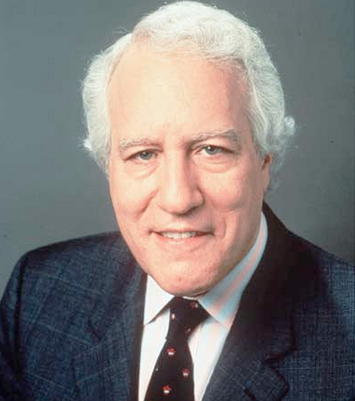
Louis Rukeyser was the pioneer in TV broadcasting that focused on Wall Street. For over three decades he introduced millions of viewers to some of the intricacies (and silliness) of wall Street!
3) In 1987, Gross started PTTAX, which through his stewardship grew into the world’s largest bond fund ($270 billion by 2012);
4) By 2001 (July 8th), no less an “authority” than the New York Times pronounced the following: “William H. Gross, the nation's most prominent bond investor”;
a) Before and after that, the sobriquet “Bond King” was frequently referred to in connection with Gross.
5) Chicago-based fund authority, Morningstar, named Gross its “Manager of the Decade” in 2010 for “investment calls and top-notch performance”. In presenting the award, Morningstar described Gross as “one of the best investors of our era”, noting that Gross had increased investor wealth by some $47 billion!
So what happened to bring Gross down from the proverbial “mountaintop” of success?
Well, first of all, let me emphasize a point which should be obvious, but is absent from virtually every other recent piece on Gross I have read:
Bill Gross is human, pulling on his pants one leg at a time and subject to all of the frailties and vulnerabilities to which the human race is prone – including the temptation of believing too thoroughly that the superlatives used by others to describe you are completely (and virtually inevitably) true.
By the year 2011, with 40 years under his belt of unparalleled success investing billions in the bond market, becoming a fixture on financial TV and radio as the premier “authority” on bonds, being quoted regularly in virtually every major financial publication, and generating steady bond market “alpha” for fund investors… Gross became a little overconfident. About what did he become overconfident? Quantitative Easing II.
Let me explain.
In November of 2010, Federal Reserve Chair, Benjamin Bernanke (the “Father” of Quantitative Easing (QE)) announced a follow-up round of monetary easing that would include the purchase of $600 billion of U.S. Treasury Securities by the end of the March, 2011.
Based on his own experience and his understanding of bonds and economic history, Gross entitled his (much referenced) February 2011 Shareholder Letter[3]: “Devil’s Bargain”. [For your benefit, I included selected excerpts from his letter in the Appendix.] In that letter Gross excoriated the U.S. Federal Reserve’s ZIRP (Zero Interest Rate Policy) and continuing QE policy … even daring to liken the Fed’s money machinations to the work of the “devil”. More specifically, based on an interpretation of classic economic theory that was adhered to by many other market “experts” at that time… Gross strongly believed that U.S. Treasuries were overbought, that inflation would soon be kick started, and that holders of treasury bonds were therefore (significantly) under-compensated for their prospective risk! Therefore, he started his letter with these three bullet points:
- “Money has become the economic and political wedge for profound changes in American society.
- Perhaps the most deceptive policy tool to lessen debt loads is the “negative” or exceedingly low real interest rate that central banks impose on savers and debt holders
- Old-fashioned gilts and Treasury bonds may need to be ‘exorcised’ from model portfolios and replaced with more attractive alternatives both from a risk and a reward standpoint.”
It was that third point that distinguished Gross’ market outlook from the countless other active money managers in 2011 who (essentially) resonated with Gross’ macro analysis. You see, Gross literally “exorcised” every last U.S. Treasury Security from PTTAX portfolio!
WOW! At the time, Gross’ decision was described by others as a “very bold” portfolio adjustment! Just imagine how Gross’ reputation as “Bond King” would have been enhanced if his bold move had proven spot on!
Alas, by the end of 2011, it was clear that Gross was incorrect. Just take a look at the following bond yield chart (the inverse of prices), with the date of Gross’ momentous decision (Feb 2011) highlighted:
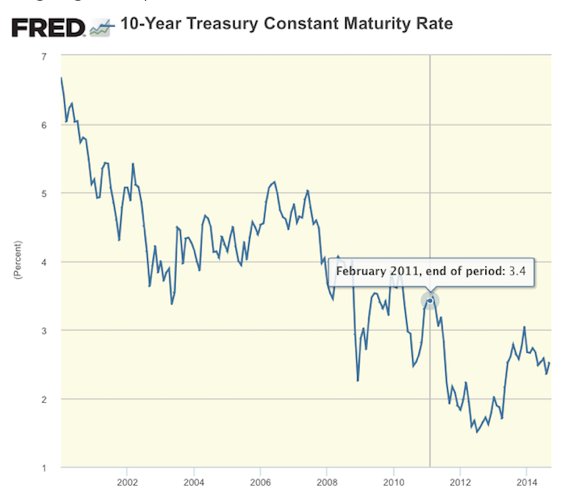
Here is a YIELD Chart of the 10-Year US Treasury Bond (remember that Prices move inversely to Yield).
If you step back from the above chart a bit and imagine what the chart looked like at the end of January 2011… it is much more understandable why Gross thought 10-year Treasury Bonds were closer to a price top (yield bottom) than the other way around. During the prior 10 years, Treasuries had traded in a range between (roughly) 2.5% to 6.5%. And more starkly, since 2008, they had ranged rather narrowly between just below 2.5% to just above 4%!!
Needless to say, the move downward below 1.5% (to a new all-time low) caught almost everyone off-guard!!
The inevitable and unsurprising result of Gross’ “bold call” gone awry was two-fold:
1) Underperformance of PTTAX vis-à-vis its bond index benchmark (Barclays US Aggregate Total Return Index) … 4.16% vs. 7.84% (a 3.68% difference, relatively huge for bonds);
2) Significant shareholder withdrawals… which at that point was an unusual trend for a Bill Gross managed fund.
Let me (figuratively) highlight and bullet point these particular developments: ie.
1) Underperformance and
2) Asset outflows
The dark, shadowy specter of those two developments in 2011 would prove to “haunt” Gross from that point through his exit from PIMCO in September of 2014 (and beyond). If you review the press clippings on Gross and PTTAX following 2011, you’ll see an almost religious adherence to the inclusion of a reference to one or both of these 2011 developments. It was almost as though, from then on, Gross had a big red “W” emblazoned on the front (and back) of his crisp white shirt… reminding all that he was WRONG.
One glaring example of this phenomenon can be found in the writing of economist, professor, author, and New York Times “Op-Ed” columnist: Paul Krugman. It is evident that Krugman has little use for Gross… and the following excerpt from his 9/30/14 New York Times Blog post[4] offers an illustration:
“It’s fairly clear that the events of 2011 are a large part of the story of Bill Gross’s abrupt departure from Pimco; as Neil Irwin says,
‘A disastrous bet he made against United States Treasury bonds in 2011 led to three years of underperformance and billions in withdrawals.’”
The problem is that Krugman has some of the key facts wrong:
1) In 2012, the Wall Street Journal reported that by July of 2012, PTTAX had: “not only recouped all the net outflows for the calendar year 2011 but then gained some.”
2) Regarding PTTRX asset flows, if we consider the following, we will find that the average investor is more “forgiving” of great fund managers who make an error than is Wall Street as a whole:
a) At the end of 2010, PIMCO itself managed $1.24 trillion.
b) By 2013, two years after Gross’ misdirected Treasury trade, PIMCO assets under management had swelled 60% to more than $2 trillion.
c) As for PTTAX itself, it reached its asset peak ($292.9 billion) in April 2013 … and that does not include the assets invested in its ETF cousin (BOND)!!
3) As for the claim of “three years of underperformance”… during 2012 PTTAX returned 10.36%, versus just 4.22% for its benchmark index (a huge difference of 6.15%)
4) Meanwhile, in August of 2012, Forbes printed an article entitled “Why Bill Gross is the Most Underpaid Money Manager in the World”. That is hardly the type of article written about a dysfunctional loser!
Taking a step back from PTTAX itself, it may surprise some of you that Gross also managed a number of other, much smaller funds – within the “Closed End Fund” category.[5] Those funds include:
PIMCO High Income Fund (PHK)
PIMCO Corporate and Income Opportunity Fund (PTY)
PIMCO Corporate and Income Strategy Fund (PCN)
PIMCO Income Strategy Fund (PFL)
PIMCO Income Strategy Fund II (PFN)
How did Gross do in running those funds? Morningstar has a specialist in the CEF area — named Cara Esser. As part of her job, Esser regularly tracked the above CEFs managed by Gross. This is how Esser has described the performance those five funds up to the time of Gross’ departure from PIMCO:
“The performance under Bill has been really good.”
That might be an understatement. During the “Gross Era”, those funds sported average annual returns between 23% to 30%! That smoked the average return of “peer funds” in this category (Multi-Sector Bond CEF) … which was about 15% per year. As a result, Morningstar ranked these five CEF’s within the top six of the category. Obviously, Gross made some unconventional portfolio decisions between 2008 and 2014 that set these funds up for success![6]
Gross is especially proud of the PIMCO Corporate and Income Opportunity Fund (PTY). [I need to re-emphasize that Gross no longer manages those funds!]
I will spare you a re-hash of the sad details surrounding Gross’ soap opera like exit from PIMCO in 2014. [If you want such a re-hash, take a look at: https://www.markettamer.com/blog/bond-king-gross-jumps-ship-to-janus ]
It will be much more helpful for me to touch on the following before I wrap up:
1) How are Gross’ successor portfolio managers at PTTAX doing?
2) Where did Gross go and how is he doing?
How has PTTAX been doing?
The three co-managers (Mark Kiesel, Scott Mather and Mihir Worah) who took over the stewardship of PTTAX following Gross’ late September exit have handled a challenging transition with admirable skill. Despite a 2014 funds outflow totaling more than $150 billion[7], they have “steadied” the ship – continuing to manage assets through a bottoms-up analysis, with the objective of generating maximum total return within a fixed income portfolio applying prudent standards to preserve capital. On April 6th, the fund still managed almost $125 billion.
According to Morningstar, during the period between 9/27/14 and 3/10/15, PTTAX topped 91% of other “Intermediate Term” bond funds with a 2.6% return!! Significantly, despite a great performance relative to its peers, most articles about PIMCO or PTTAX still dwell on its past asset withdrawals and performance challenges. These three managers might be wondering when the press will finally give the three of them a “clean slate.”
How has Gross been doing?
Gross now manages the Janus Unconstrained Bond Fund (JUCTX). At the end of August of 2014, JUCTX held assets totaling just $12.9 million. Currently, Gross manages about $1.45 billion through JUCTX:
1) Gross’ AUM within JUCTX amounts to some $200 million more than are now in PTTAX.
2) It is essential to note that Gross’ arrival at Janus as manager of JUCTX has served to increase that fund’s assets by a incredible factor of 112!!
In addition to the above asset inflow, following Gross’ arrival at Janus, the notorious global financial giant, George Soros, sent Janus $500 million to be managed in a separate account by Gross.
To be blunt, Gross has not yet provided JUCTX shareholders with anything remotely resembling a sterling return. However, as we have often noted in these articles, a manager’s true value is determined over the long-term… not just over any given six-month period.
More significantly, Gross seems to be enjoying life more now than during his tenure at PIMCO. He did not relocate to the international headquarters of Janus Funds (in Denver, Colorado) choosing instead to remain in Newport Beach, California and run JUCTX out of an office Janus provided there within just five minutes of his old PIMCO office!
In a recent interview, Gross shared how his outlook on life has evolved through the years:
“I define success differently now than five or 10 years ago. I mean, you know, success in the early years was business-related, and asset growth related.
Now success becomes a function of what we can do with the rest of the world outside … to help others and to prove that some of the prior success can blend into success for the future for others.”
To that very end, Gross, his wife (Sue), and their three children (Jeff, Jan, and Nick) have plans to donate virtually everything (except their house) to various charities through the William and Sue Gross Family Foundation. They thereby join Bill Gates, Warren Buffett, and countless others in a commitment to generosity in charitable giving!
One particularly fascinating aspect of Gross’ recent charity giving is his reference in a interview to “Give Directly” ….
Give Directly is a mobile application that enables donors to give amounts (both large and small) to persons or efforts in developing nations (Gross’ example was Uganda). So we can see that despite Gross’ advanced age (over 70 years old)… he is clearly a donor who has managed to demonstrate that he is technologically “with it”! [8]
INVESTOR TAKEAWA
It is not hard to imagine that Gross has at least one thing in common with his successors at PTTAX: wondering when the press will cut him a break and offer him a “clean slate” at Janus, instead of so religiously focusing on short-term performance and asset flows, not to mention 2011! They could at least stop using those photo images from the 2014 June Morningstar conference (which will always be tainted by the negatively charged atmosphere that dominated that time period).
But then, Gross is not the only famous person whom the press seems to “paint” with a stereotyped “brush.” We have already noted that Warren Buffett is generally portrayed in quite positive, trust-generating, grandfatherly terms. In fact, this positive image is so prevalent that it prompted long moments of awkwardness for SkyBridge Capital Investments[9] founder and Co-Managing Partner, Anthony Scaramucci, at the huge SALT Conference[10] in Las Vegas earlier this month.
SkyBridge sponsors SALT, so Scaramucci was on stage during a conference segment that featured hedge fund heavyweight, Daniel Loeb, who runs the Third Point hedge fund.
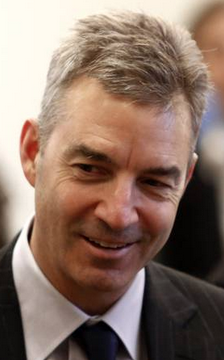 Loeb’s on stage remarks soon drifted toward the revered Oracle of Omaha.
Loeb’s on stage remarks soon drifted toward the revered Oracle of Omaha.
After admitting that he personally enjoys reading Buffett’s annual letters, Loeb said the following:
“There’s a lot of wisdom in those letters, but I see a wide disconnect from the wisdom and how he actually behaves. He criticizes hedge funds, but he used to run one. He criticizes activists, but he was the first activist. He says we should all pay more taxes, yet he avoids them himself.”[11]
Loeb garnered lots of applause (and even laughter) from the (hedge fund) audience… but one can only imagine the internal turmoil suffered in those moments by Scaramucci, who is renowned for his mastery of high level networking. However, we do know that Scaramucci followed Loeb’s comments by announcing that his prospects of securing Buffett as a speaker at the 2016 SALT Conference just went down the drain:
“Warren Buffett, if you are listening, I’m sorry!”[12]
At least Loeb was wise and gracious enough in the midst of this hubbub to admit that his observations were “gratuitous” and a “potshot.” Upon occasion, it would be refreshing for a journalist to admit that ongoing laser focus on 2011, asset outflows, and “under” performance in connection with Bill Gross could also be “gratuitous” or a “potshot.”
So one “takeaway” from this story is to approach the financial press (at all times) with a discerning and critical eye. Members of the press do often move in “lock step”… and they tend to enjoy “piling on” rather than “moving on.”
For example, take a look at this 2014 graph (through 12/15/14):
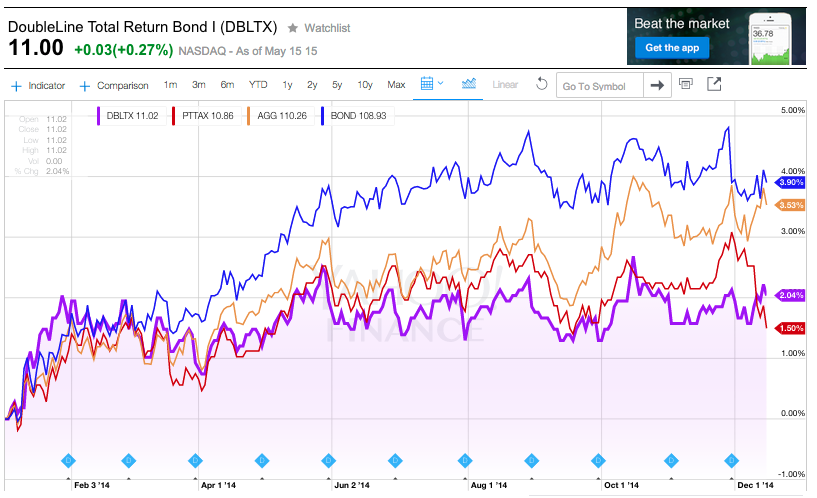
Through mid December of 2014, PTTAX kept up with DBLTX while BOND outperformed the bond index fund (AGG).
The light purple area reflects the performance of the multi-sector bond fund run by the much heralded “Bond Guru”, Jeffrey Gundlach. In my observation, Gundlach has evolved into the most often quoted authority (besides the Fed Chair) on bonds. Therefore, you might expect the performance of his often-mentioned DoubleLine Total Return Bond I (DBLTX) to have smoked PTTAX during 2014, as well as the bond index (AGG). Instead, it largely paralleled the performance of Pimco Total Return Bond, and it underperformed both AGG and the Pimco Total Return ETF (BOND)!
Similarly, you’d think that DBLTX would have outperformed each of the others during the first four months of 2015.
However, the only change vis-à-vis 2014 is that PTTAX outperformed both DBLTX and AGG… while BOND performed best of all. If you are surprised you haven’t heard much about the above… you now know why it is essential to never depend upon the “popular” financial press for an accurate view of current reality!
This mention of Jeffrey Gundlach raises an additional point. Since Gross has been (seemingly) “dethroned” as the “Bond King”…. which bond manager is actually the new and current king?
For what it might be worth, the Financial Times recently opined (in a splashy article) that since neither Gundlach nor the other most respected active bond manager (Franklin Templeton’s Michael Hasenstab) have the huge AUM (Assets Under Management) numbers Gross once commanded, the bond crown should be passed to Joshua Barrickman of the Vanguard Group (who manages the Vanguard Total Bond Market Index Fund (VBMFX)).
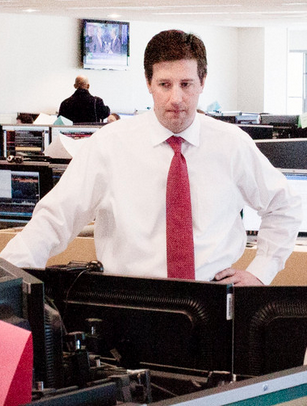
Joshua Barrickman is a young, rising star at Vanguard, who manages its Total Bond Market Index Fund (VBMFX).
As “evidence”, the Times offered two graphs:
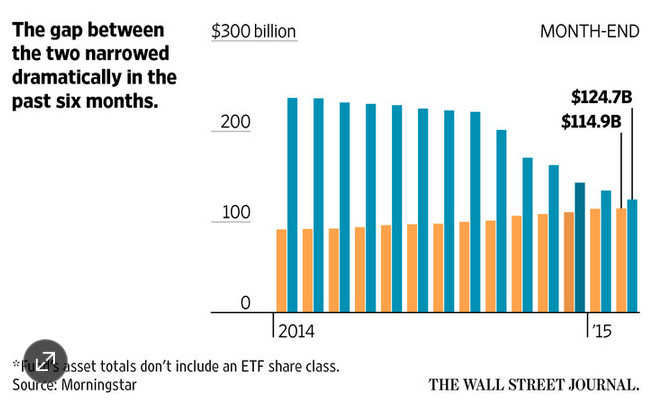
This second graph shows an undeniable trend that will soon lead to Vanguard Total Bond Market Index Fund (VBMFX) surpassing PTTAX in AUM! (Note that depending upon which data source one looks at, VBMFX has already surpassed PTTAX in AUM).
I see no benefit in launching into a detailed critique of the fallacies that are inherent in this thesis posed by the Times. I believe it is sufficient to counter that thesis with these two simple points:
1) Despite all of Joshua’s accomplishments and his expertise, we must focus on the fact that Barrickman, after all, manages an Index fund!
a) That does not suggest that his job is easy.
b) But it does clearly mean that he is not an active manager. His job is to match an index… not beat it.
c) For all of his many faults, Bill Gross could never be accused of leaning on or mirroring an index! His goal was always to outperform any given benchmark index!
d) Therefore, the only reason that Barrickman might actually rate the “Bond King” moniker would be if the Times believes:
“All that matters is size!”
2) Financial market regulators are discovering that, within the current bond market (post “Dodd Frank” legislation and within the existing global environment of virtually universal central bank “Easing”) “Big” funds pose a potential danger to financial stability when they hold outsized positions in any one security or bond asset class! [See https://www.markettamer.com/blog/bonds-dying-of-thirst]
Try to remember back to last year’s September/October time frame. Recall the turmoil within a number of bond markets that evident then! It was no coincidence that those markets were volatile at the same time Gross was rumored to be “in trouble”. Indeed, the very day that Gross exited from PIMCO, consider these market moves (on a day when the Bank of America Merrill Lynch Global Bond Market Index fell a mere 0.05%):
a) Mexican sovereign bonds fell 0.3%.
b) Verizon Communications Inc. bonds declined by 0.3%.
c) Inflation-protected U.S. bonds dropped by 0.4%.
Gross held outsized positions in each of the above. And as we learned in our prior article, the severely reduced role of primary dealers in “making markets” has left the bond market more vulnerable to moves made by big bond funds.
To be more specific, the International Monetary Fund published a report that warned about big bond fund managers who develop over-sized stakes in higher-risk, less liquid global bonds. Here is a quote from the head of the IMF’s financial markets division, Jose Vinals:
“Credit-focused mutual funds have seen massive inflows and have become the largest holders of corporate and foreign bonds. These inflows have created a liquidity illusion, which can amplify shocks and lead to sharper falls in the market.”
The IMF also noted that last fall PIMCO owned at least 25% of the outstanding high-yield bond debt issued by Ally Financial, SLM, and AIG.
Perhaps worse, the report highlighted the fact that this fund giant owned over 40% of the debt issued by the Bank of China, just under 40% of the debt from the State Bank of India, and nearly 30% of the debt issued by the Spanish bank BBVA.
Let me hasten to add that PIMCO has not been alone in accumulating such sizable positions. Among many other big fund companies noted by the IMF, its report cited Franklin Templeton Investments for its large stakes in high-yield bonds from Tenet Healthcare and First Data… and significant holdings of Irish and Ukrainian bonds.
Of course, I need not remind any of you of two of the most basic principles of investing:
1) Always ensure adequate diversification;
2) Always manage risk.
Quite frankly, I do not know who the true, “legitimate” heir to the “Bond King” crown is… or should be! However, within the current global bond market environment… perhaps the crown should only be placed upon the head of whichever major bond fund manager navigates the coming five year period with the best returns… while demonstrating mastery of the devilishly difficult skill of managing risk – thereby helping investors to sleep more comfortably at night!
DISCLOSURE:
The author has, in the past, held PTTAX and BOND. He currently owns HYS (a PIMCO ETF). He also owns DBLTX. It is perhaps also worth noting that he is not related to Bill Gross, but does value Gross’ charitable giving practices. Nothing in this article is intended as a recommendation to buy or sell anything. Always consult with your financial advisor regarding changes in your portfolio – either subtractions or additions.
APPENDIX:
Below are select excerpts from Bill Gross' February 2011 diatribe about Federal Reserve Policy:
“America requires more than a makeover or a facelift. It needs a heart transplant absent the contagious antibodies of money and finance filtering through the system. It needs a Congress that cannot be bought and sold by lobbyists on K Street, whose pockets in turn are stuffed with corporate and special interest group payola. Are record corporate profits a fair price for America’s soul? A devil’s bargain more than likely.
This metaphorical devil’s bargain has its equivalent in the credit markets these days. Central bankers have lowered the cost of money for 30 years now, legitimately following global disinflationary forces downward, but also validating increased leverage via lower real interest rates. Today’s rock-bottom yields, however, have less to do with disinflation and more to do with providing fuel for an asset-based economy that promotes unsustainable wealth creation and a false confidence in perpetual capital gains. Real 10-year interest rates fell from over 5% in the early 1980s to just under 1% in recent months and have arguably been responsible for 3,000–4,000 Dow points and 2–3% annual appreciation in bonds over those three decades.
Ultimately, however, the devil gets his due or at least the central bankers run out of mathematical room to lower real yields below commonsensical floors. Today’s negative real yield on 5-year TIPS (Treasury Inflation-Protected Securities) is perhaps reflective of a market that has lost its fundamental value anchor. A century-long history of average 5-year real yields would point out that bond investors in Aaa 5-year sovereign space have demanded and received a real interest rate return of 1.5% instead of today’s -0.1%. We are being shortchanged, in other words, by 160 basis points from the get-go, a “haircut” that is but one of four ways that governments attempt to escape from an over-levered national balance sheet.
To rebalance debt loads and re-equitize financial institutions that should have known better, central banks and policymakers are taking money from one class of asset holders and giving it to another. A low or negative real interest rate for an “extended period of time” is the most devilish of all policy tools. And the asset class holder that it affects, or better yet, “infects,” is the small saver and institutions such as insurance companies and pension funds that hold long-term fixed income assets.”
FOOTNOTES:
[1] For the record, more recent articles have used images from that Conference (with the tell tale red background) but without the sunglasses. And yet the red background has become so closing associated with negative aspects of Gross that the image still conveys the same tone (albeit more subtly).
[2] This reference comes from a children’s book and movie: “Lemony Snicket: A Series of Unfortunate Evants.”
[5] Mutual funds are “open ended”… shares are created or redeemed as investors buy or sell their shares in any given mutual fund. In contrast, a Closed End Fund (CEF) holds a designated number of shares. No additional shares are regularly created or redeemed (the board might add shares… but only under rare special circumstances). Therefore, shareholders buy/sell CEF shares on an exchange.
[6] It is reported that Gross’ personal favorite was PTY.
[7] Per http://money.usnews.com/funds/mutual-funds/intermediate-term-bond/pimco-total-return-fund/pttax
[8] Here is more detail: Give Directly utilizes technology such as remote sensing, digital data collection and a crowd-sourced monitoring platform to locate recipients, integrate them into electronic payment networks, and monitor transfers end-to-end. Gross says:
“Most Africans have cell phones, which is hard to believe, but mobile money. And so if you can do that and contribute $25 or $50 to someone in Uganda that, you know, of course, you haven't met — you know, boy, I mean, that's almost as good as outperforming the market, from my standpoint.”
[9] SkyBridge is a global alternative investment firm managing approximately $12.1 billion in assets
[10] As you’d guess, the conference is heavily attended by hedge fund professionals
[11] In fairness to Mr. Buffett, Loeb’s comments reflect his own interpretation of historical facts, not the facts themselves. For example, Buffett never applied the 2%/20% annual expense/performance fee model that is standard among hedge funds.
[12] It is also worth noting that Texas oil tycoon, T. Boone Pickens, leapt to Buffett’s defense: “He's a pretty successful guy. Anybody who owns a railroad impresses me!”
Related Posts
Also on Market Tamer…
Follow Us on Facebook

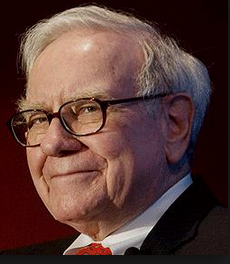
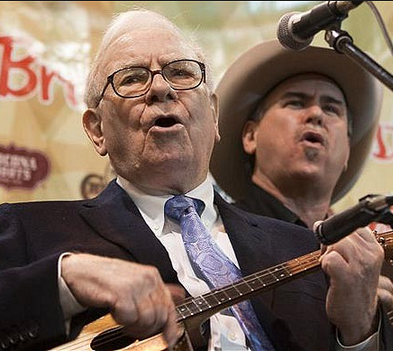
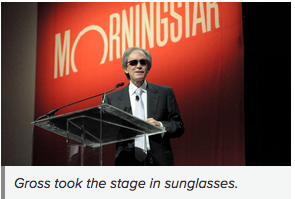
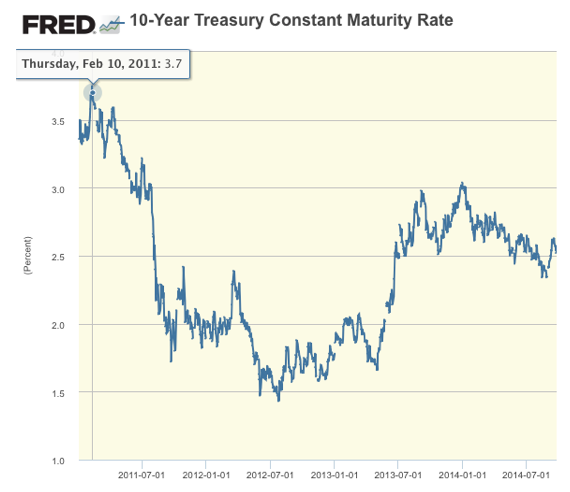

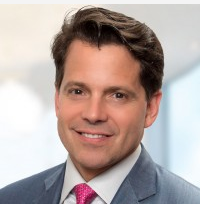
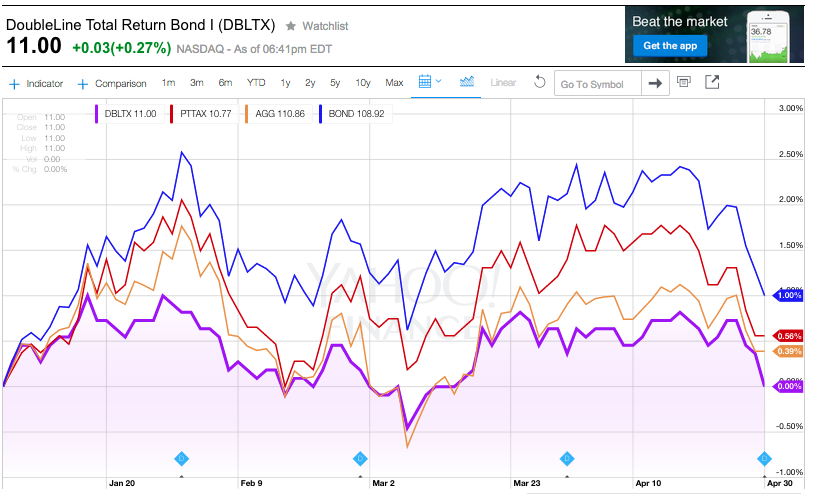
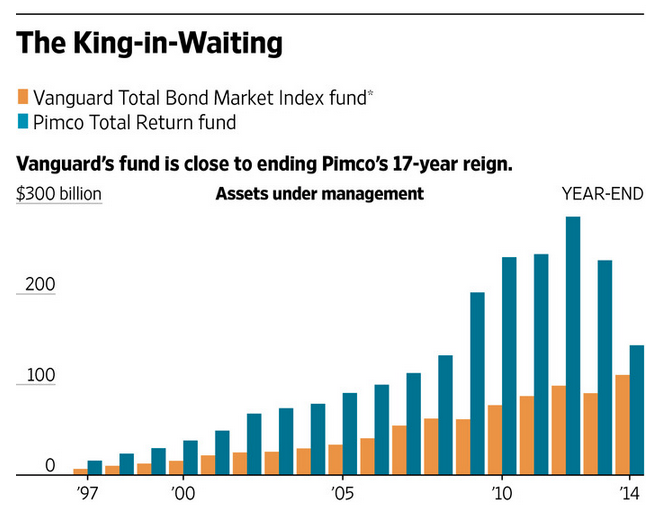
 Move Over, Stock-Split Stocks: IPO Mania Is Taking Center Stage (and It's Probably Not Going to End Well)
Move Over, Stock-Split Stocks: IPO Mania Is Taking Center Stage (and It's Probably Not Going to End Well)

